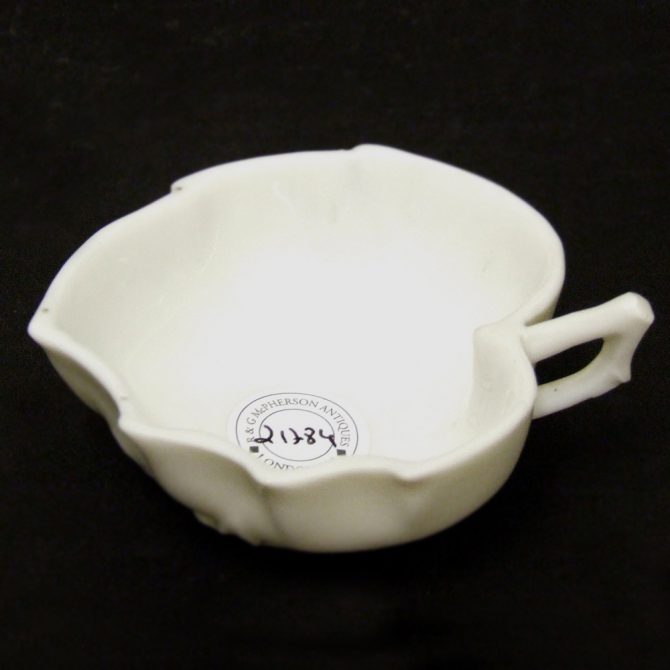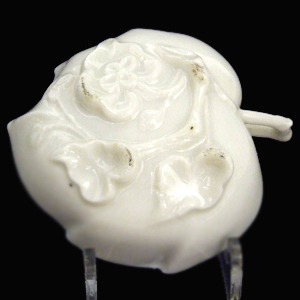
KANGXI 1662 – 1722. Blanc de Chine Porcelain
A Blanc de Chine Porcelain Leaf-Shaped Brush-Washer, Kangxi 1662-1722. From the Dehua Kilns in Fujian Province. The Leaf-Shaped Form with Sharp Points to the Leaf Edge has a Stalk Handel and is Supported by Moulded Leaves to the Underneath.
SOLD
- Condition
- Perfect.
- Size
- Diameter : 7.9 cm (3 1/8 inches) x 6.9 cm (2 3/4 inches).
- Provenance
- N/A
- Stock number
- 21784
- References
- For a very similar blanc de chine leaf-shaped dish, and a Böttger porcelain as well as a stoneware version of the original from the collection of Augustus the Strong at the Zwinger in Dresden see : Blanc de Chine, Porcelain From Dehua.A Catalogue of the Hickley Collection (Rose Kerr & John Ayres, Art Media Resources Ltd 2002). Page 57, plate 6.
Information
Blanc de Chine Leaf-Dishes :
Leaf-shaped Blanc de Chine brush-washers of this type were novelty items for the Chinese scholar`s desk, part of a range of object for the scholar that includes items such as ink-stones, wrist-rests, brushpots and small vases. However, these small Chinese leaf-shape porcelain objects were also seen as desirable novelties in the West too. Their function and symbolism were lost. Separated from their Chinese cultural surroundings, but their delicacy and beauty would have been admired irrespective of their original function or any symbolism they were meant to convey to the owner. They would though have had an oriental exoticism that would have enhanced the interest of a Kunstkammer or a collection of porcelain such as that owned by Friedrich Augustus I (1670-1733), Augustus the Strong, Elector of Saxony and King Augustus II of Poland. Very similar leaf-shaped dishes were made at his Meissen porcelain factory, in fact they were made of Böttger stoneware as well as early white Böttger Meissen, all were based on the Blanc de Chine originals belonging to Augustus the Strong himself. The stoneware copies date to around 1710-1715 and white porcelain ones from about 1720 onwards. Many other 18th century European porcelain factories made similar shaped dishes, but it is I think, very difficult to know whether these were based on the Chinese originals or the Meissen copies.
